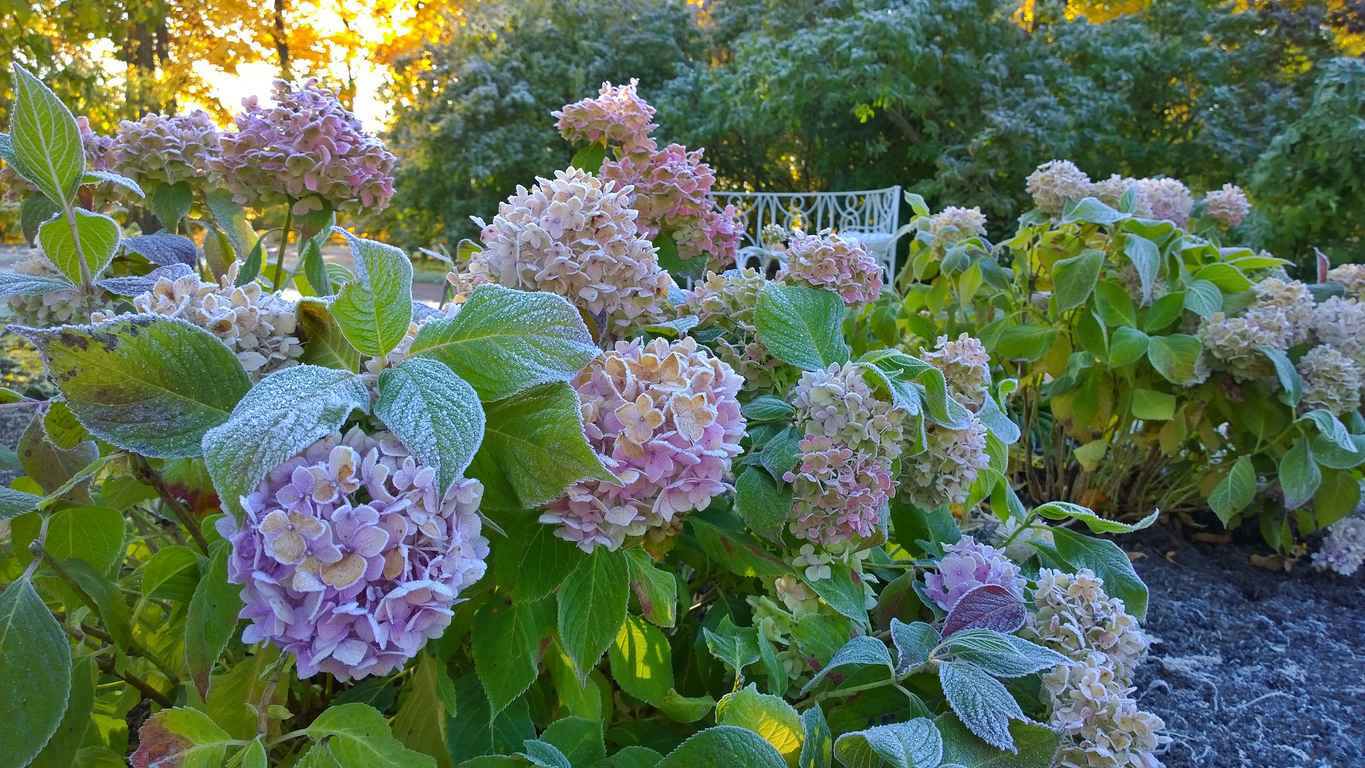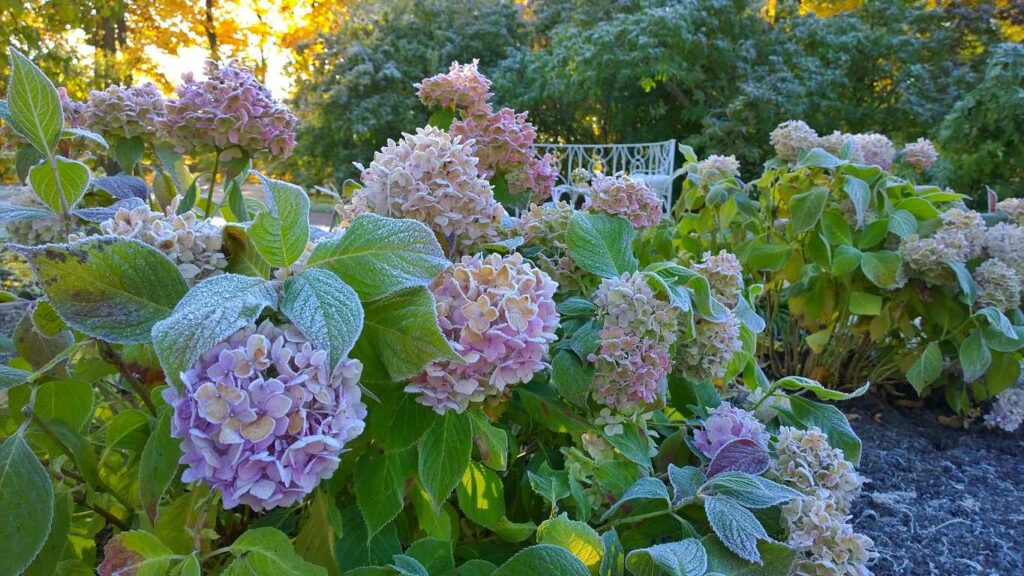Hydrangea Information: How To Grow And Care For Hydrangeas
The stunning hydrangea has been captivating our imagination for decades. Its beauty is on the classy side. The flowering shrubs are not a show-off like other flowering plants. But when hydrangeas are blooming in your garden, there’s no doubt what part of the garden you’ll be spending the most time at. When you plant different varieties of hydrangea, you create a carnival of colors that makes your landscape stand out. Think of the garden as the canvas and the hydrangeas as the paint. Now you can get as creative as you want.
The popularity of hydrangea plants doesn’t just stem from their calm beauty. They are easy to plant since they’re not fussy about the soil type or the pH level. These shrubs have USDA hardiness zones between 5 and 9. So they can handle varying temperatures and weather conditions.
Hydrangea at a Glance
If you’re looking for shrubs that give you an abundance of blooms and don’t ask for much in return, the hydrangea is the right plant for your garden or yard. But don’t let their low-maintenance qualities fool you. If you really want your hydrangeas to thrive and bloom every year on time, you’ll need to care for them just like you would any other flowering plant.
Hydrangeas bloom from the middle of summer all the way to the fall. The blooms vary in shape and color depending on the varieties you grow as we’ll see later. But you could have flowers in red, blue, lavender, rose, or white. Each color outshines the others in brightness and depth. Best of all, some varieties have multi-colored blooms so you won’t have to plant different hydrangeas to get different flowers.
You can grow these shrubs as border plants, in flower gardens, or in containers. They seem to serve every purpose. And with so many varieties and new cultivars rolling out of nurseries every year, there’s no limit to the landscaping designs you can come up with. In fact, the hydrangea shrubs are taking up their well-deserved place in many yards and gardens across the country. But which variety or cultivar to grow?
Hydrangea Varieties
These shrubs come in so many varieties and cultivars, that they have to be divided into categories. The first includes all the varieties that flower every year like clockwork. The most notable varieties in this group are the following.
- Panicle hydrangeas (Hydrangea paniculata): A very popular variety that grows up to 8 feet. They are hardy plants and will not be bothered by cold temperatures. This is why they have a hardiness zone of 3 which is lower than the other varieties.
- Smooth hydrangeas (Hydrangea arborescens): The blooms of this group appear in the late summer but they’re often larger and more symmetrical than other shrubs. The flowers open up in clusters and are often white.
The other category is for the hydrangeas that prefer warmer climates and need extra care. Many new cultivars fall under this category.
- Oakleaf: These hardy varieties not only flourish in warm temperatures, but they can also take the full sun in the dog days of the summer. Their blooms are mostly white and will last throughout the fall.
- Bigleaf: Chances are most of the hydrangeas you’ll come across will be this variety. The new cultivars offer a wide variety of colors including dark blue, pink, rose, gold, red, and lavender. They are easy to grow and care for in any soil with warm weather being their only demand to grow and thrive.
- Mountain: This variety has extra exquisite colors that range from mauve and violet to green and blue. They prefer slightly acidic soil to produce these unique colors although neutral soil is still fine.
The variety that you will end up growing depends very much on the weather conditions in your area. For cold climates, you should go with the first group. These varieties can handle hardiness zones as low as 3. The frost will not damage the plants and by the next spring, they will come back to life with dazzling flowers. The second group is more suitable for warmer weather.
How to Grow Hydrangea in your Garden
Even if you have little or no experience with shrubs, you won’t have trouble growing the colorful hydrangea. Usually, the easiest way is to grow it from a cutting. This requires that you have access to a fully grown shrub. But other than that, the process is simple and straightforward. Here’s how you’ll go about it in easy steps.
- Select a new branch that has not produced any flowers. You can tell it’s a new branch since it has a light green color.
- Use a sharp and sterilized knife to cut the branch as close to the stem as possible.
- The cutting should be about 5 inches long and has at least 3 sets of leaves.
- Remove the last set of leaves closest to the end of the stem.
- Trim the leaves themselves if they are too large. You can cut each leaf by half without damaging the cutting or reducing its chances of growing.
- Dip the cutting in rooting hormone powder and anti-fungal material before you plant it.
- Select a small pot and fill it with a general-purpose potting mix. Add in organic compost to give the plant a good start.
- Water the soil until it’s moist but not wet.
- Dig a hole in the soil about 3 inches deep and place the cutting. Fill the hole with soil but don’t pack it.
- Water the soil again lightly to help it settle.
- Cover the pot with plastic. Don’t let the leaves touch the plastic cover else they’d rot.
- Keep the pot in a warm room away from the sunlight and strong drafts.
- When the soil goes dry, water the pot until roots develop. This could take about 3 weeks depending on the weather.
Hydrangea Care
While securing a healthy cutting can be a little challenging especially while you wait for it to develop roots, the rest of the process is easy. You couldn’t find an easier plant to care for than this hardy shrub. Watering, pruning, and winter care should be the top of your priorities though.
Water
In general, you should avoid allowing the soil to go dry for long periods of time as much as possible. Once the top few inches of the soil are dry, that’s your cue to water the plant. In the summer months, you should water the shrub about 3 times a week. Always water in the morning to help the plant cope with the heat of the afternoon. Once the flower season is over and the weather turns cold, you can water it once a week or every 10 days. Some varieties such as Bigleaf thrive on constant moisture in the soil. Others don’t need that much watering.
Fertilizer
Most flowering plants need fertilizing. This is especially true for perennials that stay in the same spot for years on end. Sooner or later the soil becomes impoverished and you’ll need to help the plant with either organic fertilizer or a chemical one. While you can use chemical fertilizers for fast results, they could lead to more dense foliage at the cost of the blooms. So apply fertilizers in moderation in the early spring. You’ll need to apply it again in the early summer and right around bloom time.
Pruning
For a shrub, pruning comes with the territory. These perennials keep growing year after year and unless you intervene, that growth could become unmanageable. The only issue you might have here is that each variety requires a different pruning schedule. For example, Bigleaf shrubs need pruning in the late summer right after the last flower has faded. Panicle on the other hand should be pruned in the late winter before it springs back to life again. When you prune the shrubs, focus on dead wood, infected branches, and leaves that don’t look healthy. For old plants that don’t look well, you can trim them all the way down to the base. This helps rejuvenate the shrub and give it a fresh start in life.
Winter Care
If the winter in your area is particularly cold and you worry about the survival chances of the shrubs, you should protect them. The easiest way to care for the shrubs in the winter is to cover the soil with mulch. You could use shredded bark, pine needles or straw. Or you could create a mulch mix out of all of these ingredients. Sprinkle it around the base of the plants to create a thick layer. This protects the soil and preserves the temperature to help the roots against freezing. Experts warn against using maple leaves as mulch. When they get wet, they mat and could suffocate the shrub.
When Hydrangeas don’t Bloom
New and even hydrangeas have a problem with blooming sometimes. This might have several causes. One of the most common issues has to do with the sunlight. Most varieties and cultivars need about 6 hours of sunlight during the summer for the flowers to grow and bloom. If you live in the Southern parts of the country where it’s warm, then 3 hours of sun every day could be enough.
If your shrubs are getting enough sunlight but still don’t bloom, it could be they’re the wrong variety for your area. They could be more suited to colder climates or vice versa. Also, make sure that the late fall frost or early spring chilling weather is not wreaking havoc with your shrubs and their flowering habits. If that’s the case, you might want to plant more cold-tolerant varieties.

